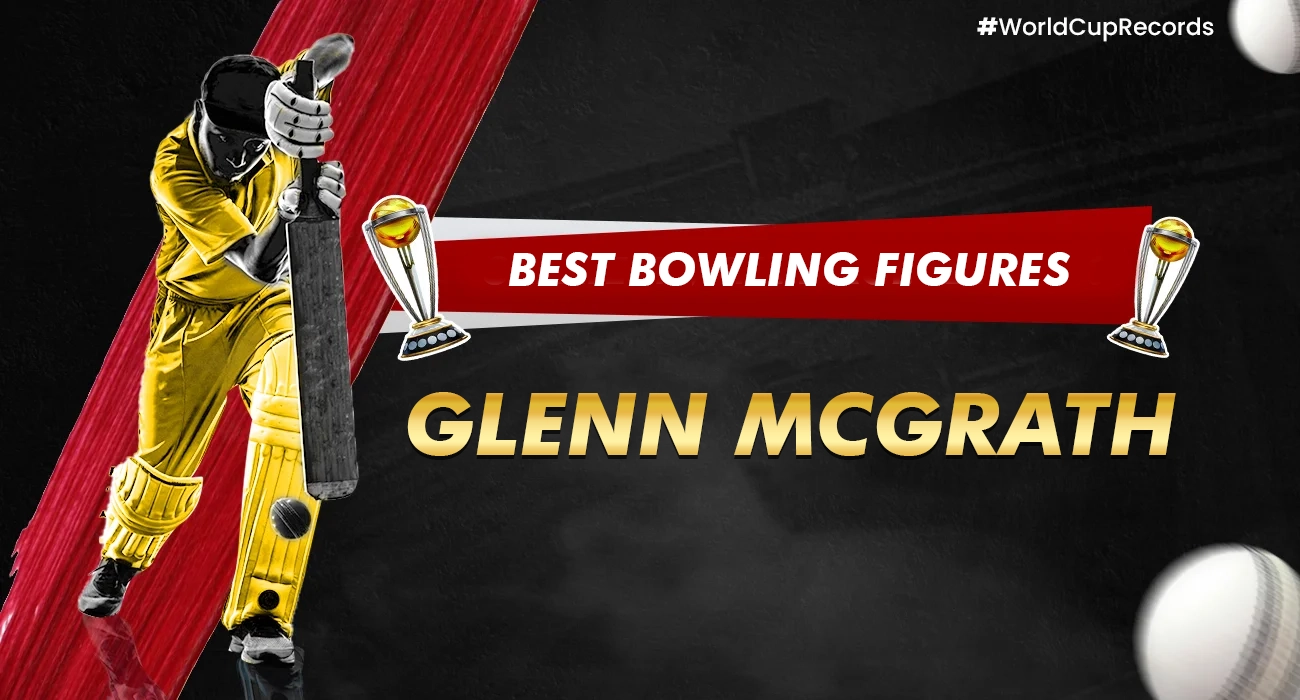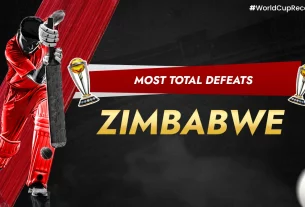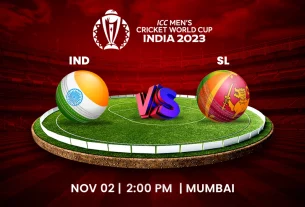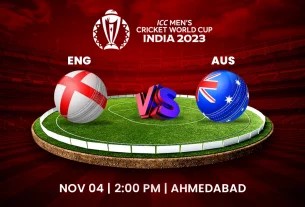ICC Men’s Cricket World Cup Records and statistics: Which player has recorded the Best Bowling Figures in the world cup history?
The peak of cricketing prowess, the ICC Men’s Cricket World Cup, has witnessed a number of remarkable performances over the years. The records for the most hundreds a batsman have scored in a single game stand out as great examples of both individual brilliance and game mastery. Centuries have more meaning than just numerical accomplishments in the ICC Men’s Cricket World Cup. They symbolise moments of individual brilliance, determination, and devotion to the team’s objective. Each century is the result of long hours of dedication, hard work, and mental fortitude—attributes that define a good cricketer. Let’s check out the bowlers with the best bowling figures in the history of the cricket world cup:
| Figures | Player | Overs | Maidens | Econ | Opposition | Venue | Date |
| 15-Jul | Glenn McGrath | 7 | 4 | 2.14 | Namibia | Senwes Park, Potchefstroom | 27-Feb-03 |
| 20-Jul | Andy Bichel | 10 | 0 | 2 | England | St George’s Park, Port Elizabeth | 2-Mar-03 |
| Jul-33 | Tim Southee | 9 | 0 | 3.66 | England | Westpac Stadium, Wellington | 20-Feb-15 |
| Jul-51 | Winston Davis | 10.3 | 0 | 4.85 | Australia | Headingley Cricket Ground, Leeds | 11-Jun-83 |
| 14-Jun | Gary Gilmour | 12 | 6 | 1.16 | England | Headingley Cricket Ground, Leeds | 18-Jun-75 |
Glenn McGrath
Goodness is commonplace, greatness is uncommon. And then there is something larger and more uncommon, like a cricketing career that pierces norms by making restrictions fashionablely incisive, to the point that an entire generation is inspired into considering them essential.
Glenn McGrath wasn’t the fastest or the cleverest bowler, but over the course of a 14-year career, he used the most basic of tools to produce terrifying results, taking a stunning total of 563 Test wickets to become the greatest fast bowler ever statistically, if not otherwise. In their well-known relationship, he and Shane Warne used intimidation and mental incapacitation to crush rivals and manufacture incredible triumphs that kept an all-time great Australian team fighting.
Andy Bichel
Andy Bichel would be towards the top of the list of candidates—and might even take home the prize—if there were a prize for the finest 12th man. Bichel was a selfless advocate for Australian cricket, with a charming grin and a warm demeanour. Who could ever forget his bravery during the 2003 World Cup victory for his country? He was bowling as quickly as he had ever done, with some swing and bounce to boot, and he was at the height of his abilities. A bowling all-rounder could also be used to describe him because of how effective his batting had become. The World Cup brings to mind a number of memorable performances by Michael Bevan in nail-biting run chases.
Tim Southee
When you think about Tim Southee, the outswinger is what comes to mind first. Despite having many delivery options available to him throughout the years, that one has hurt people the most.By utilising reverse swing and pace variations, he not only improved as an excellent new-ball bowler but also as an excellent old-ball bowler.Southee has regularly demonstrated his ability to strike the long ball in addition to being a very cerebral bowler. Without a question, he is among the greatest artists to have emerged from New Zealand in the past century.
Winston Davis
‘Lightning fast’ when he played, Winston Walter Davis, a former West Indian bowler, was born on September 18, 1958. Despite being swift and formidable, he frequently found himself on the sidelines since the pace battery was already present. He was limited to playing for the West Indies in only 15 Tests and 35 One-Day Internationals (ODI). We examine some intriguing details about his life as he celebrates his birthday.
Gary Gilmour
Gary Gilmour, another left-armer from the central coast of New South Wales, was compared to Alan Davidson at the height of his career in the mid-1970s because of his penetrating left-arm swing bowling and skill as a hitter. In January 1972, he scored 122 runs in his maiden game for New South Wales. He scored 52 runs and bagged 4 for 75 in a Test match two years later against New Zealand. He then went on to take 9 for 157 in the third Test at Headingley after taking 6 for 14 against England in the World Cup semifinal and 5 for 48 against West Indies in the championship match. After Australia’s 1975 tour, he flourished under English conditions.






